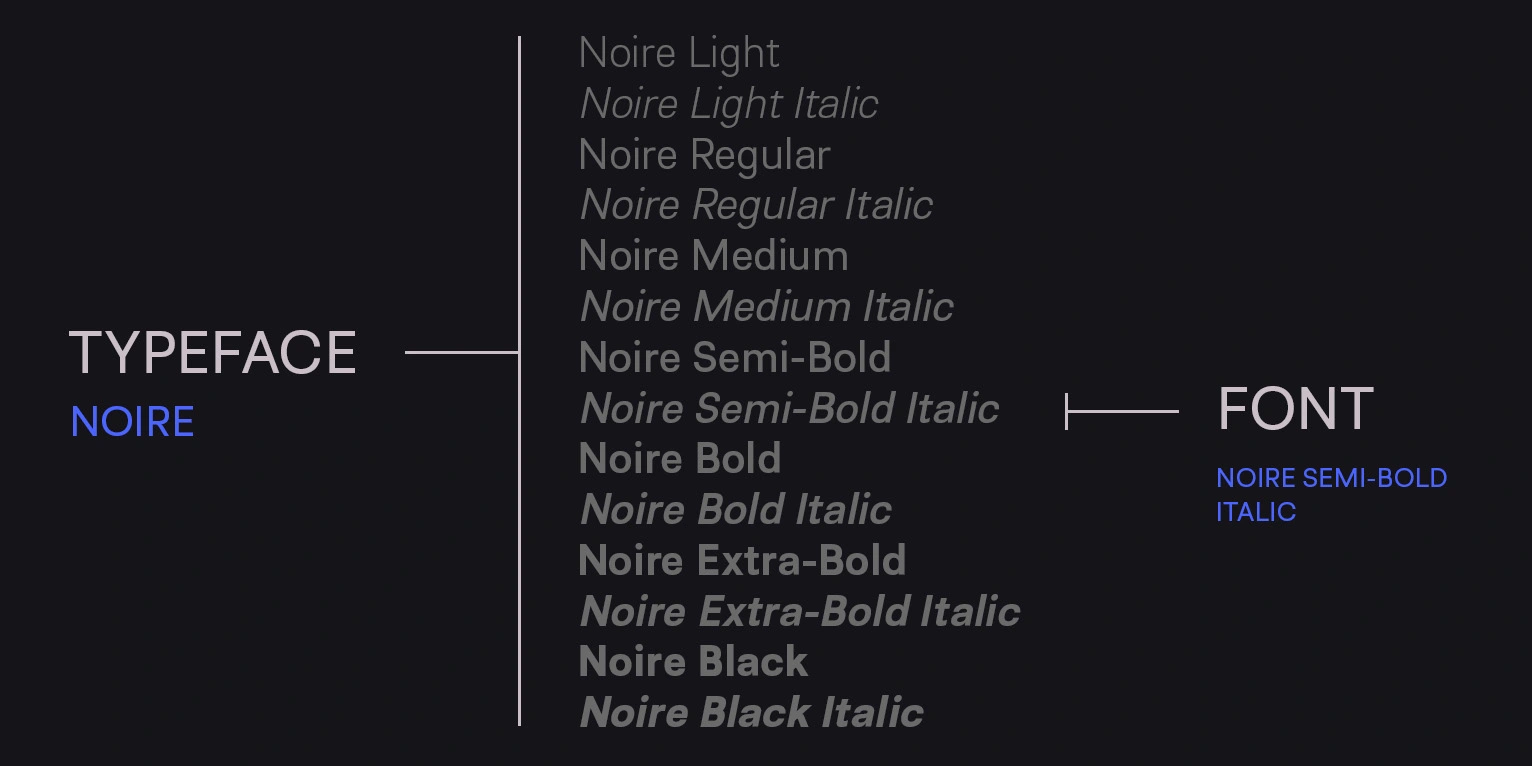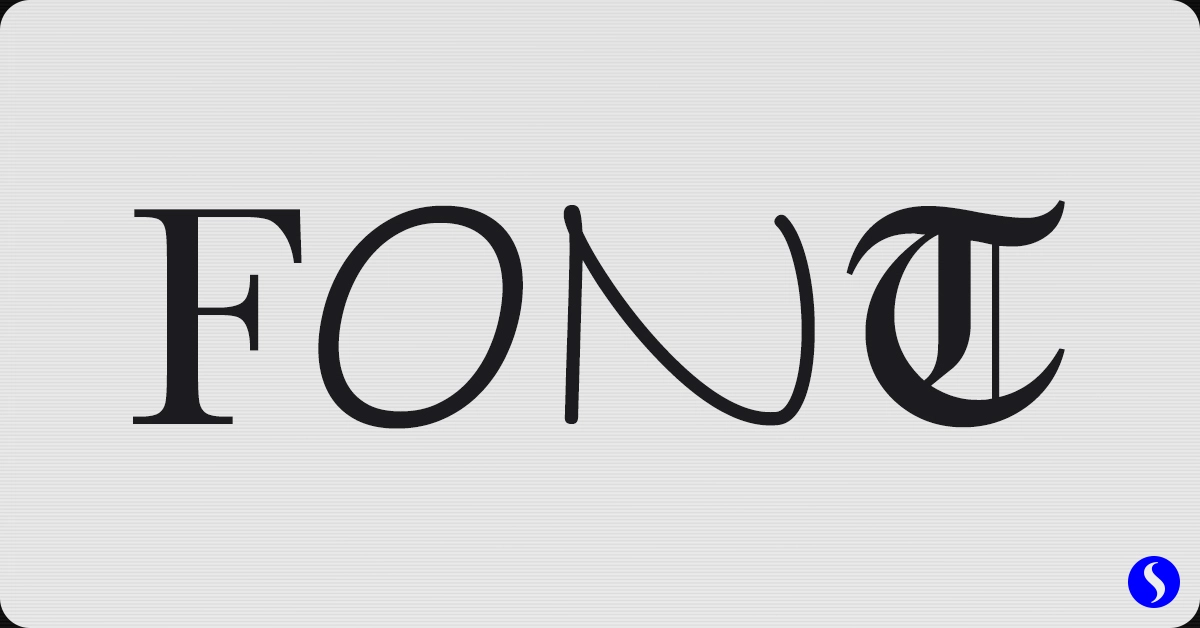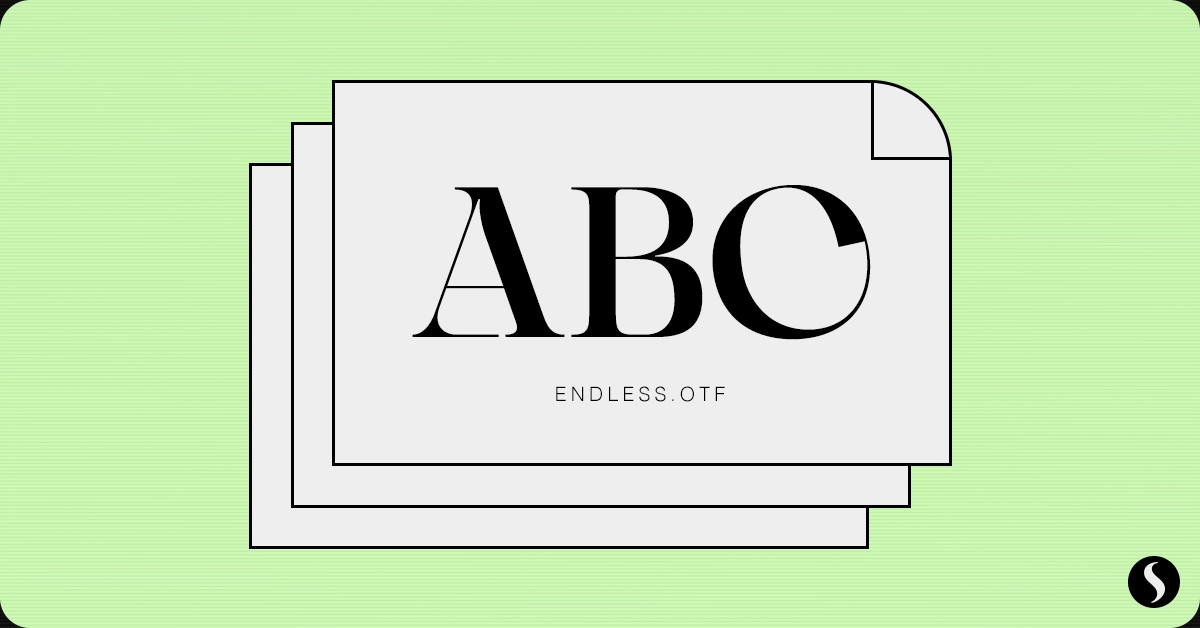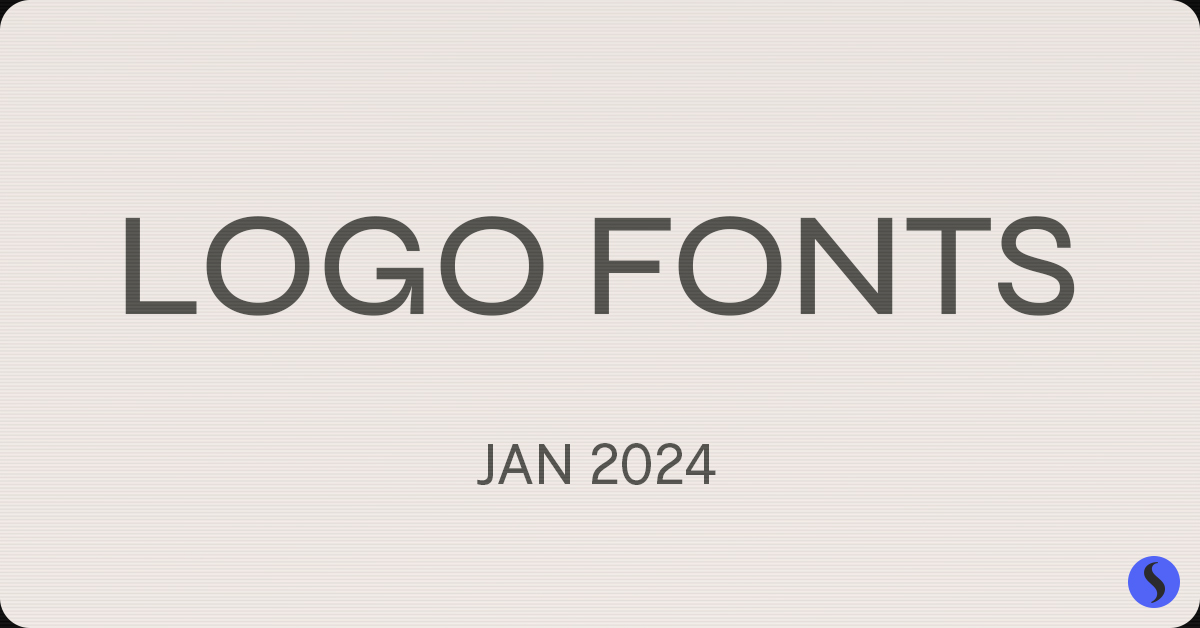The Essential Guide to Fonts vs Typefaces
What Sets Them Apart?
In the world of graphic design, typography, and digital typesetting, the terms "font" and "typeface" are often used interchangeably. However, they refer to different aspects of typography. This article aims to clarify the distinction between these two terms, providing a deeper understanding of their specific roles in typography.

fig.1: Typeface used Noire
What is a Typeface?
A typeface is essentially the design of lettering; it is the artistic creation that gives a set of characters – including letters, numbers, and symbols – a unified, stylistic appearance. The typeface is the overarching concept that defines the visual look of the entire character set. It encompasses aspects like letter shape, width, weight, and style. For example, "Times New Roman" and "Helvetica" are typefaces, each with a distinct set of design characteristics that include the curves, lines, and edges of the letters.
· It is the aesthetic design of characters.
· Typefaces include variations in style, such as italic or bold.
· They give text its personality and character.
· Examples include Arial, Baskerville, and Comic Sans.
What is a Font?
A font, on the other hand, is a specific subset within a typeface. It refers to a particular size, weight, and style of a typeface. In digital terms, a font is what you use; it's the file on your computer that you install or select when composing a document or designing a webpage. For instance, within the typeface "Times New Roman", the font might be "Times New Roman, bold, 12pt".
· It is a specific implementation of a typeface.
· Fonts define the size, weight, and style of a typeface.
· In digital typography, it's the file you use in your designs.
· An example would be "Helvetica, light, 10pt".
Historical Context
Historically, the distinction between these terms dates back to the days of manual and early digital typesetting. Originally, a font was a complete set of metal or wooden type blocks in one size and style of a typeface. As typesetting moved into the digital era, the term font adapted to its current meaning, referring to the digital file that renders the typeface in various sizes and styles.
Modern Usage
In modern usage, especially in digital typography, the difference between a font and a typeface has become somewhat blurred. This is largely due to software interfaces and digital typesetting tools using the term "font" to refer to both the typeface and its specific style attributes. Nonetheless, understanding the distinction is important for professionals in design and typography, as it speaks to the nuances of the craft.
Conclusion
Recognizing the difference between a font and a typeface is key to understanding the fundamentals of typography. A typeface is the creative, visual design of a set of characters, while a font is the practical implementation of that design in a specific size and style. While in everyday conversation the terms might be used interchangeably, in the realms of graphic design, typography, and digital typesetting, the distinction remains an essential part of the terminology.




